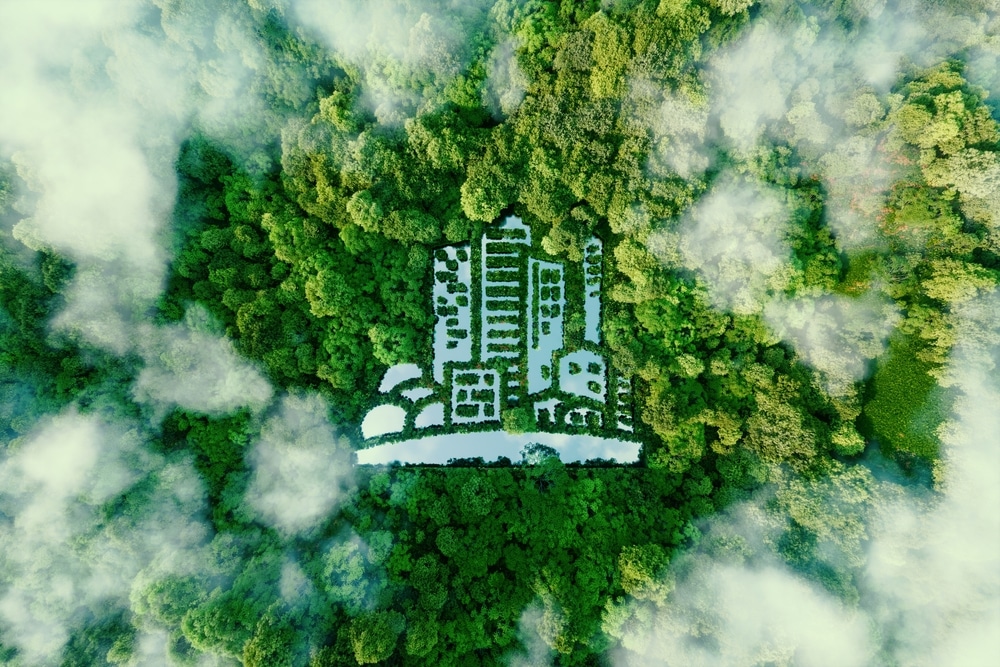Axis’ Steven Kenny explains how smart city technologies can utilise data to improve sustainability


James Thorpe
Share this content
The world is facing a number of complex challenges with climate change topping global agendas. There has never been a more urgent need to reduce carbon dioxide emissions and limit the escalating effects on our weather systems that now threaten our existence.
As the world’s population rises, so demand for food, housing and modern conveniences naturally intensifies. This is exerting further pressure on fossil-fuel based energy production and our natural world.
With more than half of the world’s population, a staggering 55%, now living in urban areas, cities are expanding to become megacities. Many of these are home to in excess of ten million people. In Asia three megacities currently exceed this number, each with a population of over 100 million. Global migration to cities and the creation of megacities drives modernisation and housing needs, food supply requirements, mass consumerism and mobility requirements, all creating major challenges.
In addition, it is now believed that 99% of the world’s population breathes polluted air that exceeds internationally approved limits and that despite an increase in air-quality monitoring, the majority of cities do not comply with the air quality guidelines. Achieving cleaner air is critical and it is one of the 17 Sustainable Development Goals of the United Nations.
A key step in addressing climate change is to look at what is now happening in our vast cities and to determine what changes can be made. Even the smallest change can have a positive knock-on effect when replicated across other conurbations. Taking steps to reduce pollution and better manage waste is a good start and this is where technology has a vital role to play in making cities smarter while better managing resources in line with a sustainability agenda.
Leveraging data for sustainable living
Smart cities use Internet of Things (IoT) devices such as connected sensors to collect and facilitate the analysis of data. This data can then be used to improve infrastructure, public utilities and services, all the while factoring in ways to make day-to-day living cleaner and greener. On a global scale, the smart cities market is expected to reach US $7,162.5b by 2030, registering a CAGR of 24.2%, with the world’s top 600 cities expected to account for 60% of global GDP by 2025 .
Success in smart cities, from a sustainability perspective, is dependent on maintaining the balance between the technology, the level of integration, the data collected and how this data can be leveraged to deliver the right intelligence. Traditionally, city operating models have been siloed with departments only focusing on one area of operation.
Modern connected technology facilitates stronger collaboration between teams and systems which is critical in allowing data to be shared horizontally for wider benefit. Real time data about the movement and behaviours of citizens, as well as the functions of city-wide services, can be used to influence greener ways of working and living.
Connected technology for smart applications
It was not so long ago that the presence of a CCTV surveillance camera within a city environment would have been purely for security purposes. Today’s network-enabled devices and sensors deliver benefits not only from a security perspective, but also across all manner of city-related operations.
One network camera, for example, can collect metadata on a huge number of different parameters; this might include efficiencies in traffic management, the frequency of public transport or even controlling lighting and heating within public buildings based on usage data.
From a sustainability perspective this is hugely important as more efficient use of vehicles can reduce pollution, while better and more intelligent use of heating and lighting, driven by real time insights about demand, can lead to less energy wastage and considerable cost savings. In addition, a system employing the very latest in low-power cameras and low-light image capture technologies can result in a reduction in overall energy use, contributing to a lower carbon footprint.
Supporting a green agenda
While a smarter, greener way of living might be achievable through a smart city model and the changes that can be made based on data insights, it’s imperative that technology procurement decisions are also made with sustainability in mind.
While off-the-shelf network cameras might on the surface appear to tick all the boxes from an operations perspective, in reality, they come with no assurances as to their reliability over the longer term, their cybersecurity credentials or whether they have been manufactured using ethical, sustainable means. City planners should be thinking very carefully about the technology they install and who they choose to partner with.
The use of innovative, connected technologies is one of the keys to the sustainable smart city of the future. Powered by AI and driven by insights derived from collected data, smart city departments will be able to collaborate much more effectively on projects to create a cleaner and more sustainable environment.
The success of the sustainable smart city can be replicated from city to city. Ultimately, working smarter for the good of the planet, and taking the steps toward positive change will result in a greener world for all.
By Steven Kenny, Axis Communications



